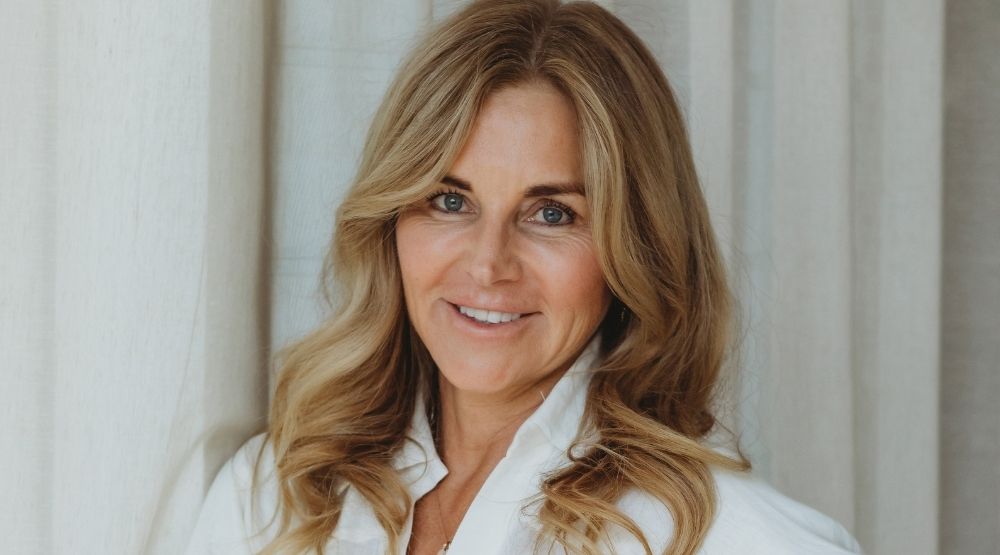Mukti has been a quiet achiever of the Australian natural beauty movement for over twenty years. She has seen the evolution of the category from niche to the mainstream, while pioneering concepts like circular beauty and the use of Australian native ingredients. Ironically, one of the key accelerants of the natural beauty movement has been technology.
I’m talking to Mukti over zoom, her three-month-old pup Milo sitting in her lap. She’s lives in the Byron Bay hinterlands, where she says she gets the best of both worlds, nestled between greenery, the beach and the odd siting of a Hemsworth (“I was in a bookshop and saw this good-looking guy.. When I left my husband said ‘Did you see Liam Hemsworth’? And I said “No, but my heart did stop!”) Having lived in Byron for decades Mukti is a long-term resident of a region that has since become saturated with local and international celebrities. She’s a also been an early adopter of natural skincare and has been pioneering the growth of the segment in Australia for decades, and the industry is finally catching up with her.
Green shoots
When Mukti started working with clients twenty years ago, the range of organic and natural skin products available in Australia was limited. She reflects, “I was using little bits and pieces I’d picked up in Europe, along with some Jurlique.” She knew she couldn’t be alone in wanting more choice. “I set about making my range, just a cleanser, toner and moisturiser,” she says. “It certainly wasn’t a professional range, the formulations were pretty rudimentary.” At the time there were practical limitations on what could be achieved with natural and organic products. But Mukti was confident that that consumer interest was there. She had studied complementary medicine and skin therapy, learning about the natural world, the environmental impacts of the beauty industry, as well as the risks of exposure to common mainstream fragrances and preservatives over time.
Her journey had its challenges. “There wasn’t anything like a ‘green chemist’ in those days,” she reflects, “it was either traditional homeopathic remedies or mainstream chemists. I did have to figure out everything myself, but while I was poo-pooed and laughed at by manufacturers, I knew I was at a tipping point.”
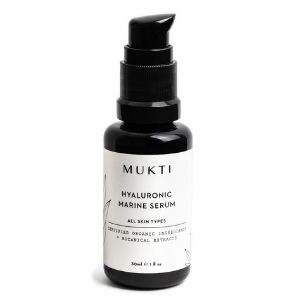
She built on her knowledge of skin therapy and complementary medicine earning qualifications in cosmetic chemistry. By the time she had several products under her belt, consumers were using search engines to understand the confusing ingredients on the back of their skincare and increasingly aware of potential problems said ingredients could cause their skin. This “better safe than sorry” mentality created a rising demand for sustainable, natural beauty and the technology that supports it. Organic and natural beauty has now become the fastest-growing segment in the market, set to reach US $32.3 billion by 2027 (Research and Markets, 2021).
“As consumer demand and awareness has grown, the increasing availability of amazing raw materials and technology has made it easier to formulate sophisticated products” Mukti explains. The Mukti brand’s USP is their use of peptides and stem cells, carriers that unlock the potential of the Australian indigenous plants. Mukti employs proven natural ingredients like Carrot Seed Oil, Bakuchiol, Argireline peptide and Kakadu Plum, whose antioxidant capabilities have developed as a response to the harsh Australian climate. These ingredients have been clinically demonstrated to decrease wrinkles, even skin tone and protect from future oxidative damage.
Friction-free recycling
There’s no point using sustainable ingredients if the packaging they come in contributes to waste. It’s recognised that one of the major challenges of recycling boils down to the concept of “friction” in user experience. Most consumers want to recycle their products and reduce their footprint, but it has been historically hard to do. Companies like Terracycle are now working with brands to decrease this friction, allowing consumers to return empty products to the company. The Mukti brand has been doing this for some time and Mukti says the process has been made easier with access to elegant, effective and sustainable packaging that doesn’t need to be broken down in an energy-intensive recycling and re-manufacturing process.
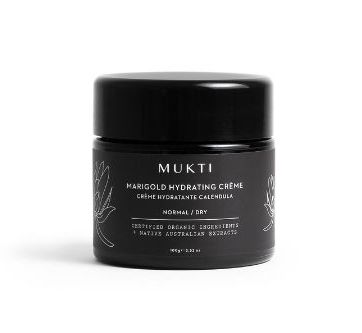
Mukti says “Way back when I started I heard about biophotonic glass – but like many things, it was only readily available in Europe.” Biophotonic or “Miron” glass is tinted glass with a spectrum able to block the UV light that oxidises skincare formulations. As Mukti points out, skincare formulators have been using this glass to protect preservative-free personal care products since Ancient Egypt. “Miron glass is far more effective than plain tinted glass,” says Mukti. “The Ancient Egyptians were using this materials thousands of years ago to preserve natural formulations.”
Miron glass is as tough as it is beautiful, meaning consumers can clean out their containers and send them back, where they will be sterilized and reused for new products. Circular environmental models have only recently emerged in the skincare industry with fast-growing independent brands like Emma Lewisham empowering consumers to “close the loop” on their consumption. Mukti has quietly been practicing this for years and has implemented several other strategies too. “We’ve now included the option of skipping cardboard packaging entirely at checkout,” she says. Mukti has seen a 53% uptake on this option, concentrated in the consumer rather than wholesaler segment of their clients.
The future
There is a general belief amongst consumers that natural personal care products are better for the environment. However, natural doesn’t always mean environmentally friendly. Many natural plants like the Argonia Spinosa or the Psoralea Plant, used to make Bakuchiol, are being illegally over-harvested. And, of course, prevalent ingredients like palm oil can be both natural and organic and disastrous for the environment.
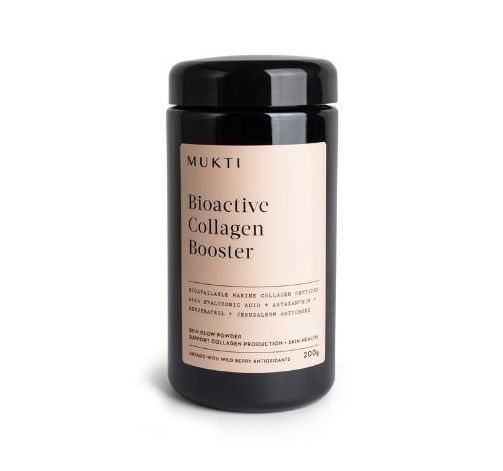
Mukti believes for these reasons that synthetic ingredients will have a place in the future of sustainable natural beauty. She says “I think with the natural and organic sector we need to look at safe synthetics, and bio-identical synthetics.” This might seem counterintuitive but she believes “they will have less of an impact on the environment so we can use similar cultures and strains and replicate them in a laboratory environment.”
Stem cells are another growth area: “Plant stem cells are a fascinating area and a real strength for our industry. when you consider human biology and plant biology being very similar, and our ability to assimilate and integrate those ingredients has been much faster and easier than using a synthetic that our bodies don’t recognise.”
She believes stem cells are the powerhouse that enables natural formulations to compete with clinical products: “Way back in 2014 I was one of the first, if not the first, to start using native Australian extracts that were cellularly extracted, and we started to see real results without compromise because of the actives that are in these extracts.”
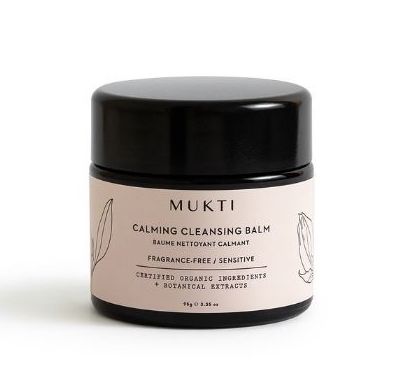
She also believes that targeted ranges are a growth area in natural beauty. Specialisation is key, “Our age defiance range has been out since 2014, and that’s where we’ve concentrated our use of peptides and vitamins. I do think as the natural beauty industry grows, we will see more of this specialisation that you see in the mass market.
Mukti believes consumers are looking for a gentler approach to beauty. She says “the consumer is looking for anything that will stimulate collagen, that is non-invasive and that will deliver scientifically proven age-defying benefits. Technologies like lasers and ultrasound skincare are very exciting.” The future of beauty lies in technologies and ingredients that work with the body, and the earth, rather than against them.
—
Read the current issue of our digital magazine here:
For more news and updates, subscribe to our weekly newsletter.
—
Have an idea for a story or want to see a topic covered on our site and in our pages? Get in touch at info@professionalbeauty.com.au.

